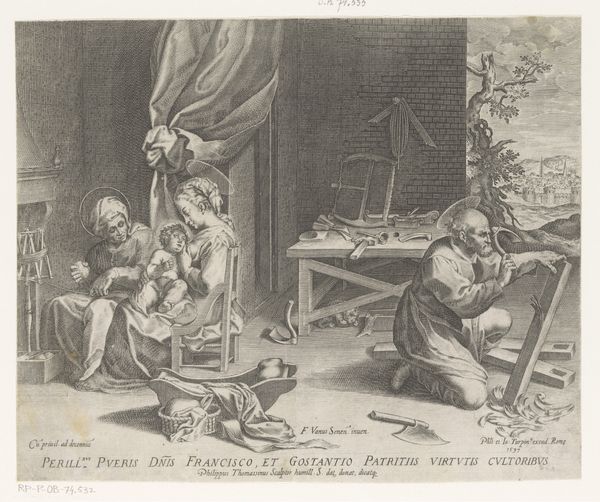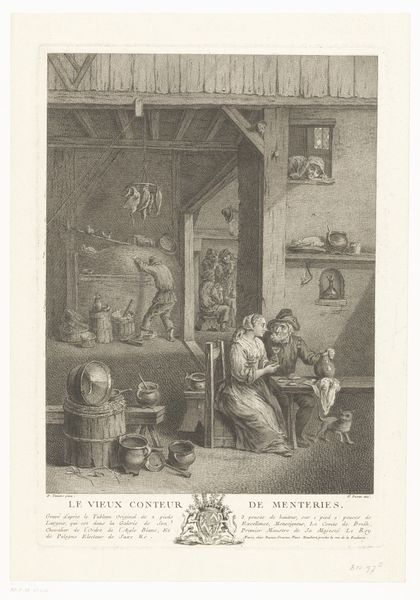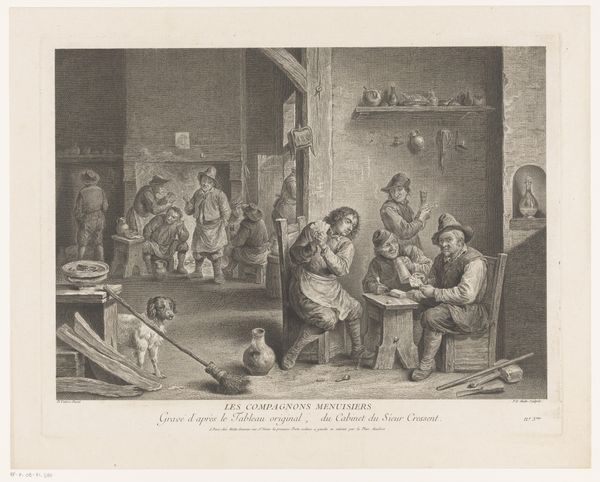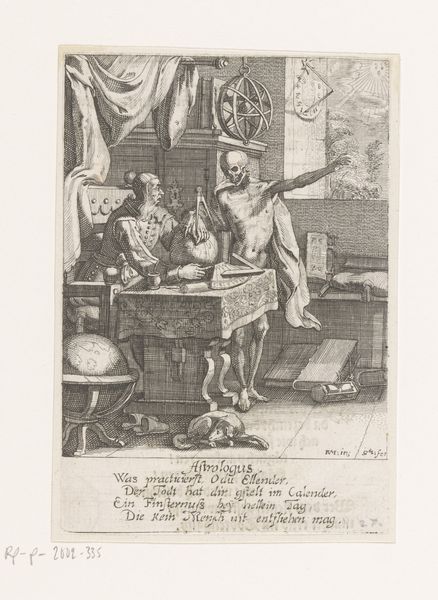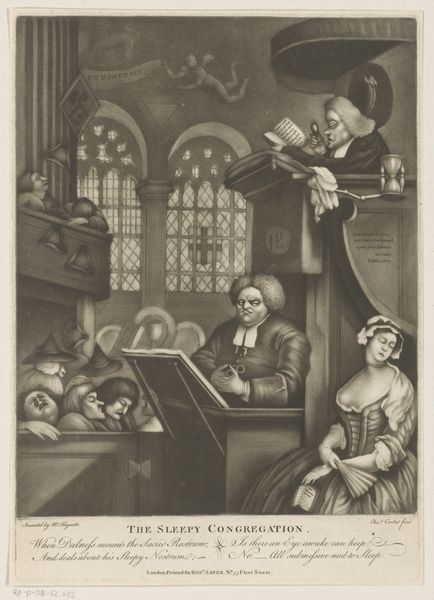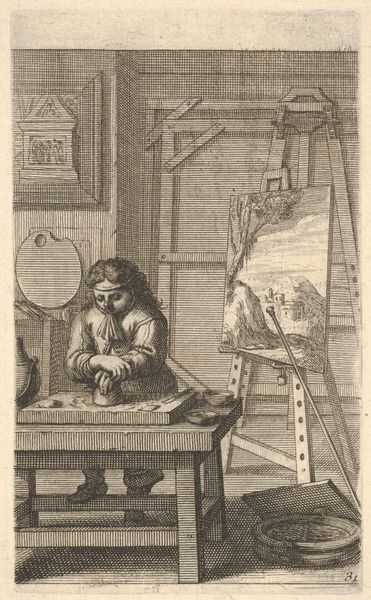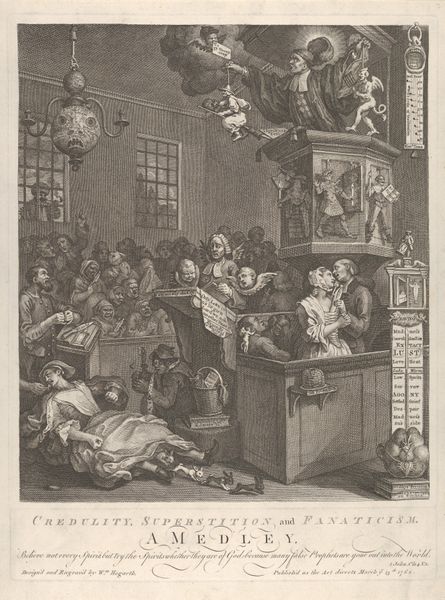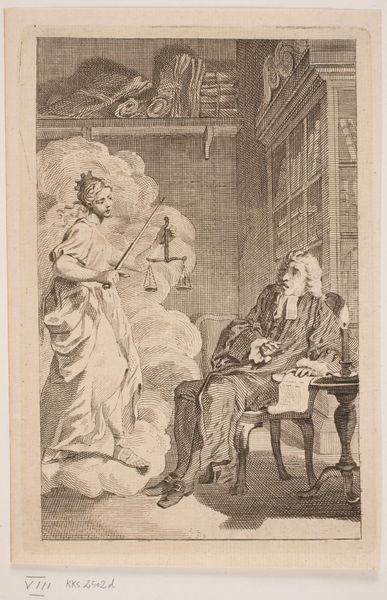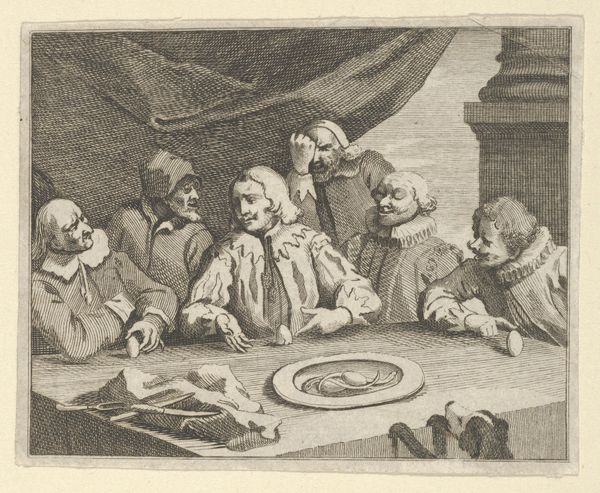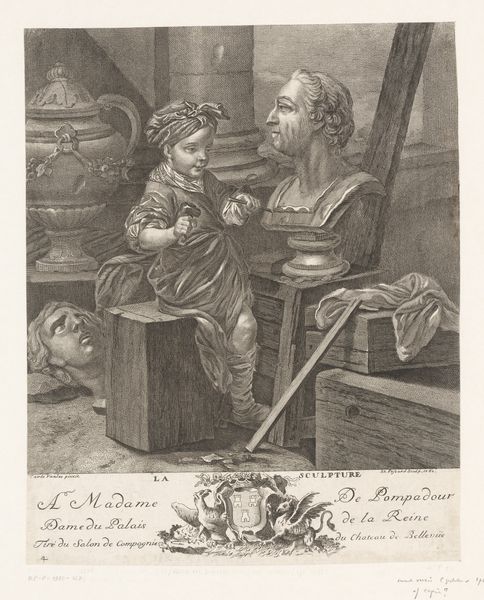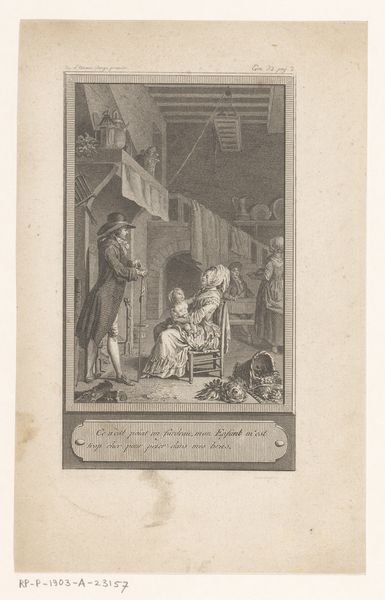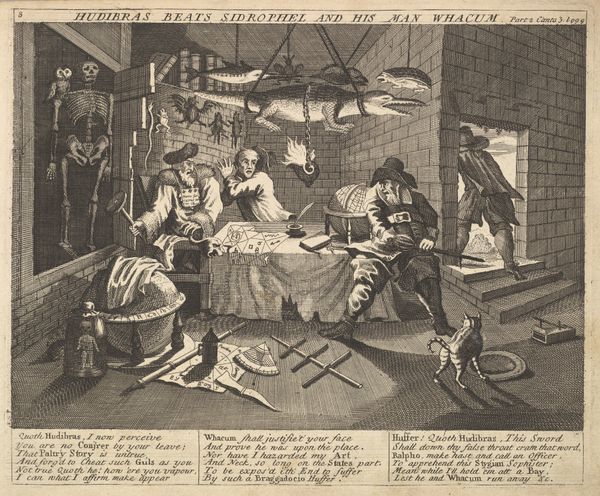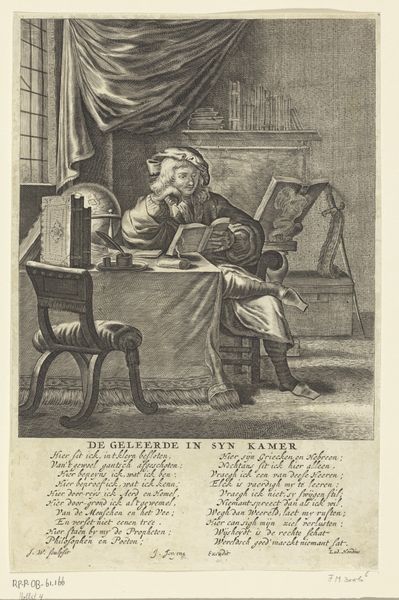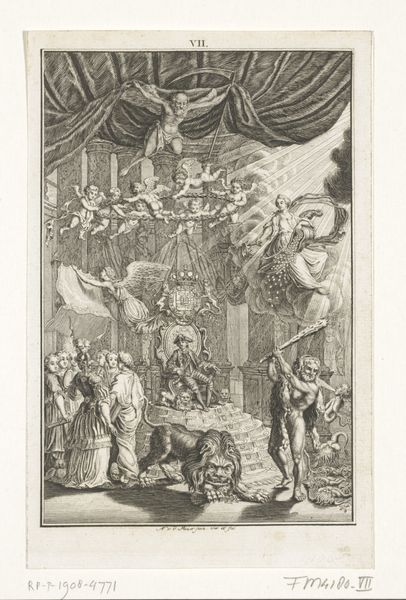
Goudweger met bediende met waarschuwingen over de gevaren van rijkdom 1639 - 1701
0:00
0:00
#
light pencil work
#
wedding photograph
#
photo restoration
#
wedding photography
#
old engraving style
#
charcoal drawing
#
unrealistic statue
#
old-timey
#
limited contrast and shading
#
19th century
Dimensions: height 720 mm, width 487 mm
Copyright: Rijks Museum: Open Domain
Curator: This etching, titled "Goudweger met bediende met waarschuwingen over de gevaren van rijkdom," roughly translates to "Gold Weigher with Servant, Warning of the Dangers of Riches." It dates from somewhere between 1639 and 1701, attributed to Pierre Landry. Editor: Phew, what a title! It feels heavy, almost oppressive, like all those barrels piled up in the foreground. The mood is definitely serious, maybe even a bit cynical. I see all that gold and the man weighed down, and it gives me the shivers, a 'be careful what you wish for' vibe, you know? Curator: Absolutely. This piece exists within a complex historical context, rife with expanding colonial trade and anxieties about wealth inequality. Landry's work, like many from that era, uses symbolism and visual cues to comment on power dynamics and morality. The gold weigher represents the elite, perhaps those profiting most directly from colonial exploitation, while the servant is an immediately recognizable symbol of exploitation in the era. Editor: It's striking how passive the main figure seems, almost bored, while this poor servant grovels with what looks like gold dust. There's this tiny, almost grotesque figure seated on the floor. And is that...rotting food? Yikes. Talk about a mixed message of glitz and decay. It also seems like the artist’s method gives us a limited contrast, but it definitely helps the old-timey feel! Curator: Right. Those decaying objects directly challenge the notion of material wealth as a source of lasting happiness. The Black servant is also central, his positioning raises complex questions about labor, servitude, and race during that time. Editor: Makes you think about who pays the real price for all that shiny stuff, doesn't it? It makes the image very tense. There is an inscription behind the figure with text… That's pretty standard in the artworks from this era. And what do you make of that painting at the top corner, above the table? A small detail, but is that supposed to give us a moral direction? It seems that a judge presides in the artwork. Curator: Precisely. By including that framed piece with this theme, Landry cleverly adds another layer to his overarching narrative, creating a sort of dialogue between earthly wealth and divine justice, a point further emphasized in the long title, of course. It seems that Pierre Landry sought to dissect the multifaceted ironies endemic in opulence. Editor: You know, wading through that detail, thinking about colonial trade and justice…it definitely pulls the curtain back on all the hidden costs of wealth. Makes me appreciate a simple sunset. Curator: Yes, its strength resides in prompting questions about historical exploitation and our relationship with materialism today.
Comments
No comments
Be the first to comment and join the conversation on the ultimate creative platform.
